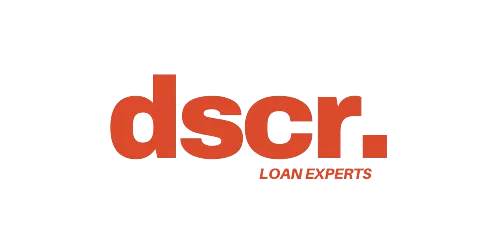
Cash DSCR vs DSCR: Which Metric Matters Most for Lending?
What is the Difference Between DSCR and Cash DSCR?
When evaluating a company's financial health and creditworthiness of a business or investment property, lenders and investors often turn to various financial ratios. Among these, the Debt Service Coverage Ratio (DSCR) and the Cash Debt Service Coverage Ratio (Cash DSCR) are two critical metrics. While they may seem similar, they serve distinct purposes and are calculated differently.
This article will delve into the differences between DSCR and Cash DSCR, highlighting their importance in financial analysis.
What is Debt Service Coverage Ratio (DSCR)?
The Debt Service Coverage Ratio (DSCR) is a financial metric used to measure a property’s or business’s ability to generate enough income to cover its debt obligations.
It is a key indicator of financial health and is commonly used by lenders to assess the company's ability to meet its financial obligations, such as paying off debts and covering fixed charges, thereby evaluating the risk of lending money for real estate investments or business loans.
DSCR Formula
DSCR = Net Operating Income (NOI) ÷ Total Debt Service (TDS)
Net Operating Income (NOI): This is the total income generated by the property or business after operating expenses are deducted, but before interest, taxes, depreciation, and amortization (EBITDA).
Total Debt Service: This includes all principal and interest payments on the property's or business's debt for a given period.
A DSCR of greater than 1 indicates that the entity generates sufficient income to cover its debt obligations. For example, a DSCR of 1.2 means the entity generates 20% more income than required to cover its debt payments.
What is Cash Flow DSCR?

The Cash Debt Service Coverage Ratio (Cash DSCR) is a more conservative measure compared to the standard DSCR. It focuses on the actual cash flows available to cover debt obligations, providing a clearer picture of the liquidity and cash management of a business or property.
Cash DSCR Formula:
Cash DSCR = Cash Flow from Operations ÷ Total Debt Service
Cash Flow from Operations: This is the actual cash generated from the core business operations, often found in the cash flow statement. It excludes non-cash items like depreciation and amortization. Cash taxes, along with other expenses like sales taxes, must be considered and potentially deducted from EBITDA to ensure an accurate cash flow figure.
Total Debt Service: Similar to the DSCR, it includes all principal and interest payments on the entity’s debt for a given period.
A Cash DSCR greater than 1 indicates that the business or property has sufficient cash flow to meet its debt obligations, providing a more conservative and realistic view of its financial health.
Cash DSCR vs DSCR: Key Differences

The radar chart above compares DSCR and Cash DSCR across several key factors:
This visual aids in understanding the key differences between DSCR and Cash DSCR, highlighting their distinct roles in financial analysis.
Lender Considerations for DSCR and Cash DSCR
Lenders place significant emphasis on the debt service coverage ratio (DSCR) and cash DSCR when assessing a borrower’s creditworthiness and determining loan terms. These metrics are crucial in evaluating a borrower’s ability to service their debt obligations and meet their debt payments.
When evaluating a borrower’s DSCR, lenders consider several key factors:
Net Operating Income (NOI) and Cash Flow: Lenders look at the borrower’s net operating income and cash flow to gauge their ability to generate sufficient income to cover debt obligations.
Total Debt Service: This includes all interest expenses and principal repayments that the borrower must make, providing a clear picture of their debt burden.
Operating Expenses and Capital Expenditures: Lenders assess the borrower’s operating expenses and capital expenditures to understand their overall financial health and cash management.
Credit History and Credit Score: A borrower’s credit history and score are critical in determining their reliability and risk profile.
Loan-to-Value (LTV) Ratio and Debt-to-Equity Ratio: These ratios help lenders evaluate the borrower’s leverage and financial stability.
In addition to DSCR, lenders also consider the cash DSCR, which focuses on the borrower’s actual cash flow available to meet debt payments. The cash DSCR is calculated by dividing the borrower’s cash flow from operations by their total debt service.
A high DSCR and cash DSCR indicate a strong ability to service debt obligations, often resulting in more favorable loan terms, such as lower interest rates and higher loan amounts. Conversely, a low DSCR and cash DSCR may signal a higher risk of default, prompting lenders to require additional collateral or impose higher interest rates to mitigate their risk.
Importance of Debt Obligations in Financial Analysis

Both DSCR and Cash DSCR are vital in financial analysis, but their importance varies depending on the context:
Lenders: Often use DSCR to evaluate the overall profitability and risk of lending to a business or real estate investment. A higher DSCR indicates lower risk.
Investors: Understanding principal and interest obligations is crucial for evaluating a company's ability to meet its debt payments. Investors may prefer Cash DSCR for a more conservative assessment of a business’s or property’s ability to generate sufficient operating cash flow to meet its debt obligations. This is crucial in ensuring that the investment can weather economic downturns or unexpected expenses.
Conclusion
While DSCR and Cash DSCR serve similar purposes in evaluating financial health and creditworthiness, they differ in their calculation and the conservatism of their assessments.
DSCR provides a broad view of income versus debt obligations, while Cash DSCR offers a conservative look at actual cash flow available to service debt.
Understanding these differences is crucial for lenders, investors, and financial analysts in making informed decisions and accurately assessing financial risk


